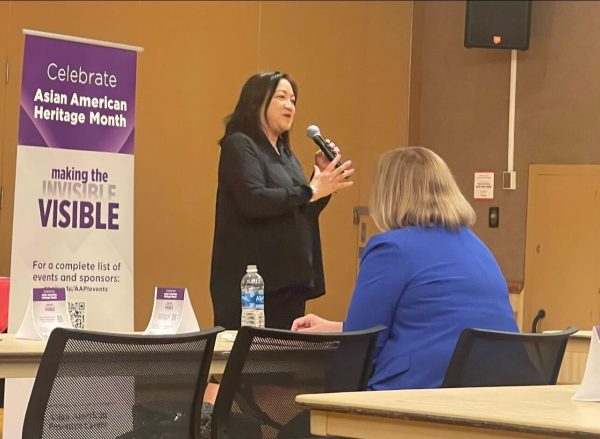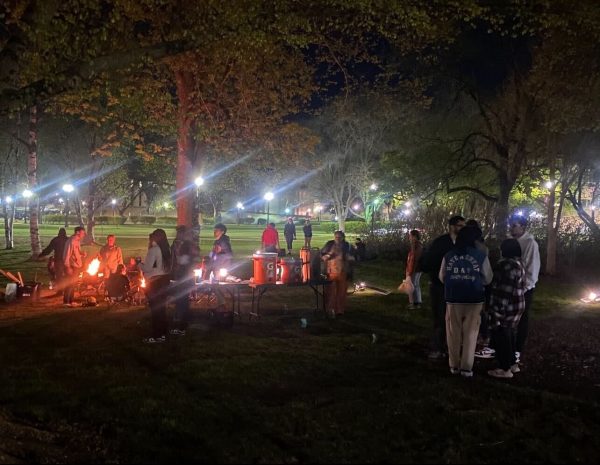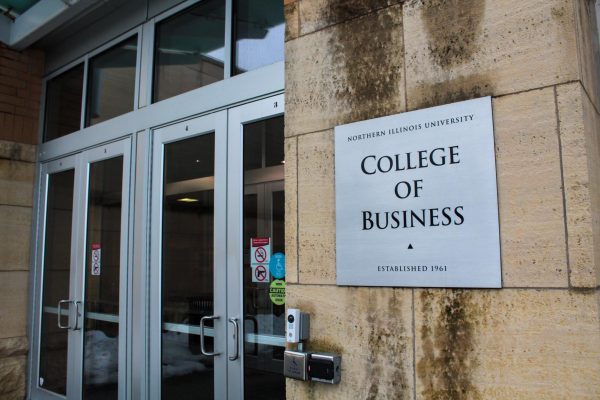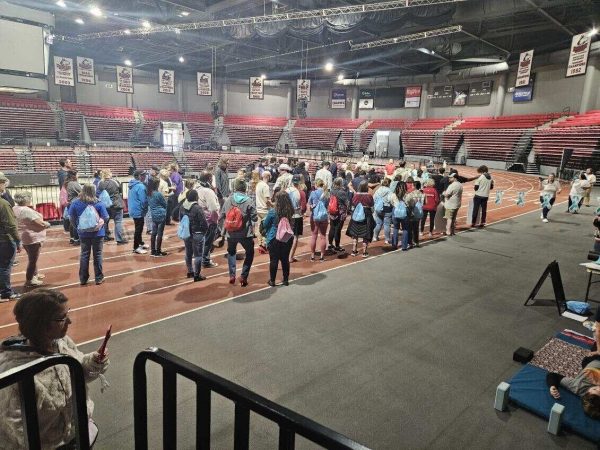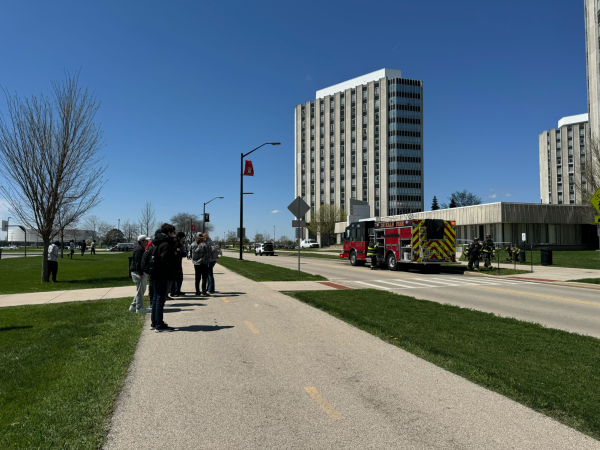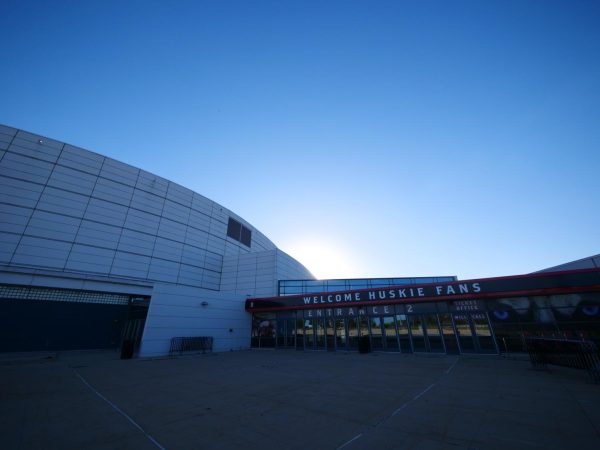Stevens Building renovations complete after five-year wait
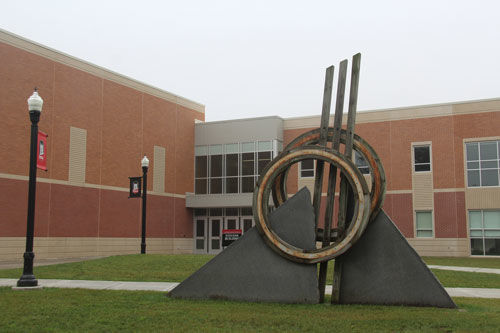
The outside of the Stevens Building, located across from Founders Memorial Library in front of the visitor parking lot.
August 27, 2018
DeKALB — The Stevens Building opened its doors Saturday to the School of Theatre and Dance and the Department of Anthropology after the long-awaited $23.7 million project completion. Students and faculty of those disciplines have been working in the south Grant Towers for the past five years but now have a home again.
The state-funded project increased the original Stevens Building by 55 percent to what is now 106,000 square feet, according to an NIU College of Visual and Performing Arts Aug. 25 press release.
Paul Kassel, Dean of the College of Visual and Performing Arts, said the college combined the opening of the building with the annual start-of-the-year ice cream social because it’s important to welcome new students and represent the school as a community of artists. He said they paired the two events with the thought that students will be more excited to begin classes Monday.
“The theatre has been without a home for five years, and so we’re eager to get our classes up [and] running in really great spaces,” Kassel said. “Learning can happen better when the environment is safe, sound and strong and full, so we’re excited as heck.”
The Stevens Building project faced multiple challenges, having been state-funded during the budget impasse. The Illinois Capital Development Board [CDB] managed the Stevens Building renovations beginning in July 2014, but faced a statewide shutdown in July 2015, putting the project on hold.
The project was approved to restart in October 2016 but once again stopped in July 2017 as a result of another statewide shutdown. Construction restarted for the last time in August 2017, and classes will resume in the building on Monday.
Kassel said improvements to the Stevens Building had been anticipated before the reconstruction took off in 2014. He said it was slated for improvement in the ‘80s and was expected to be renovated back in 2001.
“Despite all the problems, we’re here, and we’re excited,” Kassel said. “All’s well that ends well.”
Charlotte Whitely, freshman theatre studies major, said she’s excited to start classes and utilize all of the new spaces.
“For me, it’s a little overwhelming because I come from a small school, but in reality it’s the greatest experience I’ve ever had knowing I have these resources.” Whitely said.
Emmaline Linton, freshman theatre studies major, said the Stevens Building is more beautiful than anything she had access to for theatre in high school.
“It’s really great,” Linton said. “I’m really excited for what this semester’s going to bring.”
Challenges
Working out of Grant Towers for the last five years introduced several challenges for the School of Theatre and Dance and the Department of Anthropology.
One of the larger issues of being located in Grant Towers was a result of the space being separated from the center of campus. Kendall Thu, department of anthropology chair, said the location left the department marginalized from campus.
Thu said the previous location in Grant Towers proved difficult for people to find because the building is not very accessible. He said even the people who knew the department was stationed in Grant had trouble finding the department.
“We didn’t get as much traffic, and our program didn’t get as much exposure, that’s one challenge,” Thu said. “The other challenge was just students being able to find faculty.”
Thu said students would often have to meet faculty in alternative places on campus because, while in Grant Towers, they were marginalized from campus. He said it didn’t feel like the department had a home, but in the Stevens Building it’s a space specific to anthropology giving the department its own place.
“The other problem with Grant Towers was some of the facilities,” Thu said. “It was not conducive to students wanting to hang out.”
e Department of Anthropology received fresh paint and new carpets in Grant Towers, but it wasn’t an ideal space.
The transition in space does not only affect the physical working environment, but the education opportunities as well.
Thu said with the new lab space offered in the improved building students will be able to do more than in previous years.
He also said students visited over the summer, and the difference in feelings toward the Stevens Building compared to the previous location has a wow factor. He said enrollment to introductory 100 and 200 level classes have all almost increased compared to last year.
“Enrollments are almost all up over last year, so it’s hard to believe the building doesn’t have something to do with that, so we’re pretty excited,” Thu said.
Similarly, the School of Theatre and Dance has seen increases in enrollment.
“We’ve already seen our recruiting tic up, especially in design and technical areas of theatre because we have a beautiful new facility,” Kassel said. “I don’t know if you’ve seen the scene shop, but OMG as the kids say.”
Without their own space, theatre classes were previously located at various locations across campus.
Alex Gelman, director of the School of Theatre and Dance, said it was difficult for theatre students who would come in for a movement class, then have to change into boots and winter clothes to run to another class somewhere else.
“Here if it’s a day of the week where you only have theatre classes, you come in in the morning and you stay here all day, and we live in our world, and it’s so much more convenient,” Gelman said.
He said it isn’t just a matter of convenience; because they teach classes differently than other disciplines, it also affects the school’s ability to do more in terms of what students are exposed to.
Gelman said the extraordinary faculty haven’t changed, but with the new space they no longer have to invent new ways to do state-of-the-art things.
“We go out of our way to make certain that our students train in what is absolutely current, so when they step out into the world they are where the latest software, the latest equipment, the latest trends and so on, well now they can do all of that here,” Gelman said. “It’s all right here; that’s all it took.”
Gelman said in a way, the new building is a chance for the facilities and tools to catch up with the work of faculty.
“When you say it’s nine times bigger, it’s as much a comment on how great it is now as it is on how impossible it had been,” Gelman said.


